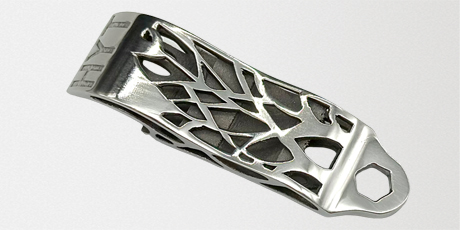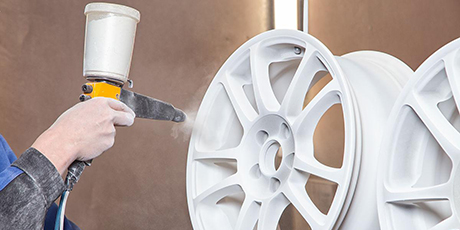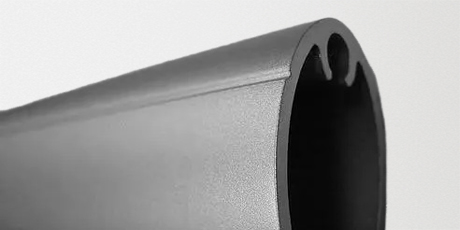
Quick Look
| Density | Melting Point | Thermal Conductivity | Electrical Conductivity | Coefficient of Expansion |
|---|---|---|---|---|
| 8.7-8.9 g/cm³ | 1083°C | 350-400 W/m·K | 58-60 MS/m | 16-17 µm/m·K |
About the Material
Advantages:
High Conductivity: Copper alloys provide excellent thermal and electrical conductivity, making them ideal for electrical components and heat exchangers.
Corrosion Resistance: Copper alloys are resistant to corrosion, which is beneficial for applications in harsh or marine environments.
Machinability: Copper alloys are highly machinable, reducing post-processing time and costs.
Aesthetic Finish: The natural color and finish of copper alloys are attractive, making them suitable for decorative and architectural uses.
Complex Geometries: Rapid Investment Casting allows for intricate shapes and complex geometries, which is beneficial for custom and detailed parts.
Limitations:
High Cost: Copper alloys can be more expensive compared to other metals, which may increase production costs.
Low Strength: Copper alloys have lower tensile strength compared to materials like stainless steel, limiting their use in high-load applications.
Oxidation: While corrosion-resistant, copper alloys can oxidize over time, which may affect their appearance unless treated.
Weight: Copper is relatively heavy, which may be a limitation in applications where lightweight materials are preferred.
Chemical Properties Table
Element | Copper (Cu) | Zinc (Zn) | Tin (Sn) | Lead (Pb) | Iron (Fe) |
Typical Percentage (%) | 85-95 | 5-10 | 0.5-1.5 | ≤ 0.5 | ≤ 0.1 |
Machining Properties Table
Property | Machinability Rating | Cutting Speed (m/min) | Tool Wear Resistance | Coolant Requirement | Surface Finish Quality |
Value | Excellent | 200-300 | Low | Optional | High |
Rapid Investment Casting Copper Alloys Design Parameters
| Maximum Bulid Size (mm) | Minimum Wall Thickness (mm) | Minimum Assembly Gap (mm) | Tolerance | Minimum End Mill Size (mm) | Minimum Drill Size (mm) |
| 600x600x600 | 1 | 0.1 | 0.30% | / | / |
Industry Applications and Case Studies for Rapid Investment Casting Copper Alloys:
Electrical Industry:
Application: Production of electrical connectors, terminals, and heat sinks.
Case Study: An electrical component manufacturer used Rapid Investment Casting to create complex copper alloy connectors, ensuring high conductivity and reducing assembly time.
Plumbing and Marine Applications:
Application: Manufacturing of valves, fittings, and pumps.
Case Study: A plumbing company employed copper alloys to produce corrosion-resistant valves, enhancing durability and reducing maintenance in marine environments.
Automotive Industry:
Application: Production of radiator components, electrical contacts, and brake components.
Case Study: An automotive manufacturer used Rapid Investment Casting to produce copper alloy radiator parts, improving heat dissipation and engine efficiency.
Decorative and Architectural:
Application: Production of statues, architectural elements, and decorative fittings.
Case Study: An architectural firm used copper alloys for decorative castings, achieving a beautiful natural finish for building facades and interior elements.
Frequently Asked Questions (FAQs) about Rapid Investment Casting Copper Alloys:
What are the benefits of using copper alloys in Rapid Investment Casting?
Copper alloys offer high thermal and electrical conductivity, corrosion resistance, excellent machinability, and an attractive natural finish.
Is Rapid Investment Casting suitable for high-volume copper alloy production?
Rapid Investment Casting is most cost-effective for prototyping and low to medium production volumes. For very high volumes, other casting methods may be more economical.
What industries benefit from copper alloys in Rapid Investment Casting?
Industries such as electrical, plumbing, marine, automotive, and decorative sectors benefit from copper alloys' properties.
How does copper alloy casting compare to stainless steel in terms of cost and performance?
Copper alloys are generally more expensive and have lower strength compared to stainless steel but offer superior conductivity and corrosion resistance in specific environments.
What are the limitations of using copper alloys in Rapid Investment Casting?
Limitations include higher cost, lower strength, potential oxidation, and weight compared to lighter alloys like aluminum.
What are the typical applications for copper alloys in Rapid Investment Casting?
Typical applications include electrical connectors, plumbing valves, marine fittings, radiator components, and decorative architectural elements.
How can oxidation in copper alloy castings be minimized?
Applying protective coatings or surface treatments can help minimize oxidation and maintain the appearance of copper alloy castings.
Are copper alloys suitable for marine applications?
Yes, copper alloys are naturally resistant to corrosion, making them ideal for use in marine environments for components like valves, fittings, and pumps.
Finishing Options














Parts Made by AutofabX

